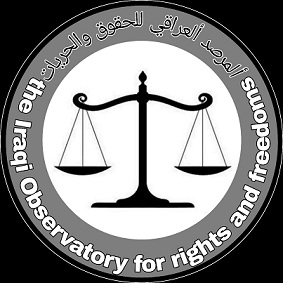
تقرير عن التعداد السكاني في العراق
في خضم الأزمات المتعددة التي يشهدها العراق، بما في ذلك أزمة المهجرين والنازحين والمختطفين، يأتي التعداد السكاني ليعكس واقعاً معقداً يتجاوز الأرقام. يمثل هذا التعداد محاولة لفهم توزيع السكان وتأثير الأزمات على التركيبة الديموغرافية للبلاد.
الأزمة السكانية
يعاني العراق من تداعيات النزاعات المستمرة، مما أدى إلى نزوح ملايين المواطنين داخل البلاد وخارجها. يُعتبر المهجرون والنازحون من أبرز الفئات المتأثرة، حيث فقد الكثيرون منازلهم وأراضيهم. يضاف إلى ذلك، مخاوف من تغيير ديموغرافي نتيجة لحملات التجنيس الواسعة التي تستهدف مواطني أفغانستان وباكستان وإيران واليمن. هذه الحملات قد تؤدي إلى تغيرات في التركيبة السكانية، مما يثير القلق بين السكان الأصليين حول هويتهم الثقافية والدينية.
التحديات الحالية
تتضمن التحديات التي تواجه العراق في هذه المرحلة ما يلي:
1. النازحون والمختطفون: تظل قضية النازحين والمختطفين موضوعاً حساساً، حيث يسعى الكثيرون لاستعادة حقوقهم وعودتهم إلى مناطقهم الأصلية.
2. التجنيس: تشهد البلاد حملات تجنيس لمواطنين من دول أخرى، مما قد يؤثر على النسيج الاجتماعي والثقافي للعراق.
3. التهديدات الديموغرافية: تخشى العديد من المكونات السكانية من فقدان هويتها نتيجة للتغيرات السكانية التي قد تطرأ.
الخطوات المستقبلية
يتطلب الوضع الراهن جهوداً من الحكومة ومنظمات المجتمع المدني للتعامل مع هذه القضايا. يجب أن تكون هناك استراتيجيات واضحة للتعامل مع المهجرين والنازحين، فضلاً عن ضمان حماية الهوية الثقافية لجميع المكونات العراقية.
Conclusion (الاستنتاج)
إن التعداد السكاني في العراق ليس مجرد أرقام، بل هو أداة لفهم التحديات والفرص المتاحة. يجب أن تكون هناك جهود متكاملة لضمان استقرار المجتمع وتعزيز الهوية الوطنية في ظل الظروف الراهنة.
Population Census Report in Iraq
In the midst of various crises facing Iraq, including the issues of displaced individuals, abductees, and those residing outside the country, the population census reflects a complex reality that transcends mere numbers. This census is an attempt to understand the distribution of the population and the impact of crises on the demographic makeup of the nation.
Population Crisis
Iraq is suffering from the repercussions of ongoing conflicts, leading to the displacement of millions of citizens both within and outside its borders. Displaced individuals and the internally displaced are among the most affected groups, with many losing their homes and lands. Moreover, there are serious concerns about demographic changes resulting from extensive naturalization campaigns targeting citizens from Afghanistan, Pakistan, Iran, and Yemen. Such campaigns could lead to shifts in the population structure, raising alarm among native populations regarding their cultural and religious identity.
Current Challenges
The challenges facing Iraq at this stage include:
1. Displaced Individuals and Abductees: The issues of displaced persons and abductees remain sensitive topics, as many strive to reclaim their rights and return to their original areas.
2. Naturalization: The country is witnessing naturalization campaigns for individuals from other countries, which may affect the social and cultural fabric of Iraq.
3. Demographic Threats: Many demographic components fear losing their identity due to potential population changes.
Future Steps
The current situation requires efforts from the government and civil society organizations to address these issues. There should be clear strategies for dealing with displaced individuals and ensuring the cultural identity of all Iraqi components is protected.
Conclusion
The population census in Iraq is not just about numbers; it is a tool for understanding the challenges and opportunities available. Comprehensive efforts must be made to ensure societal stability and strengthen national identity in the face of current conditions.



